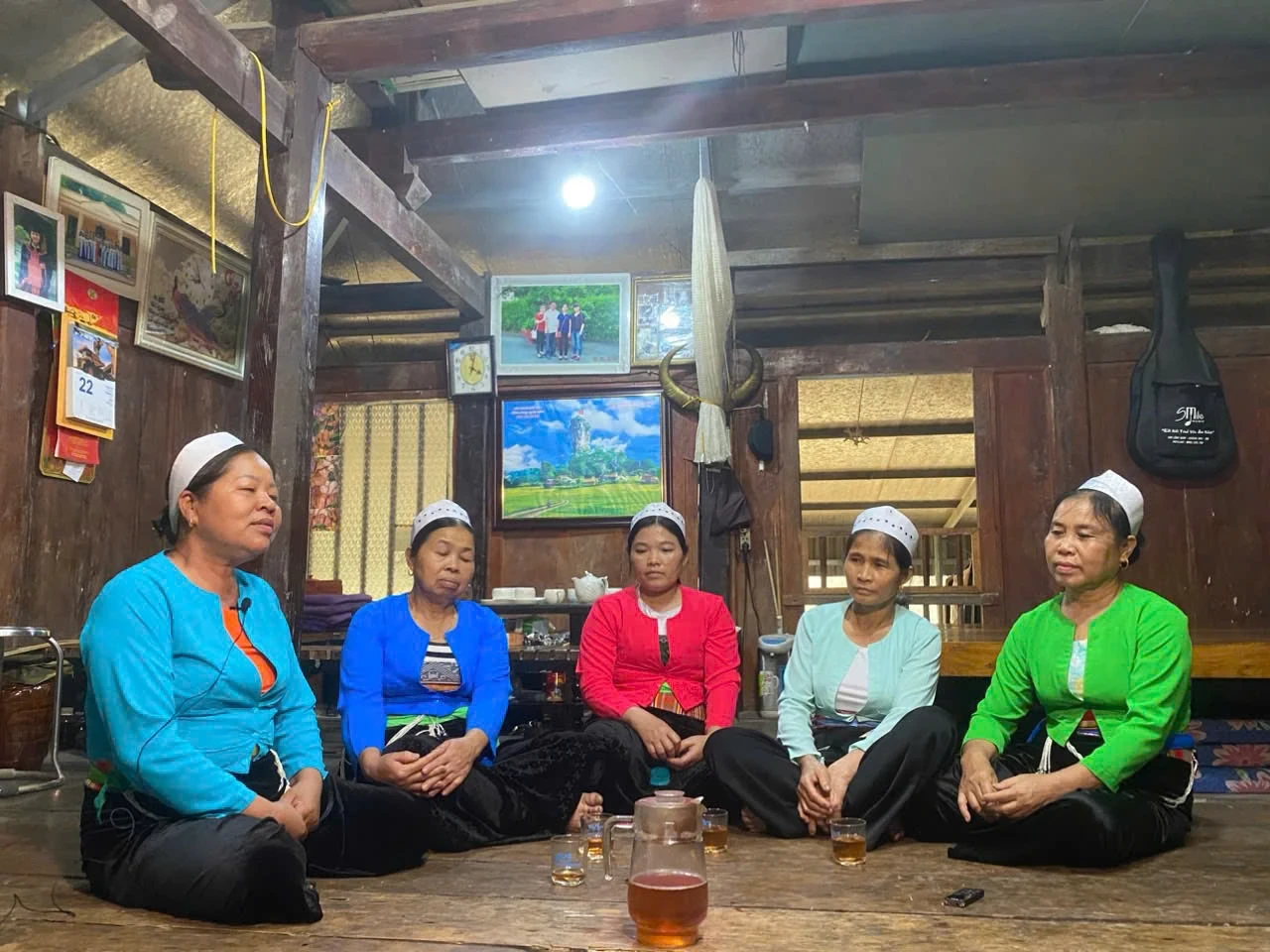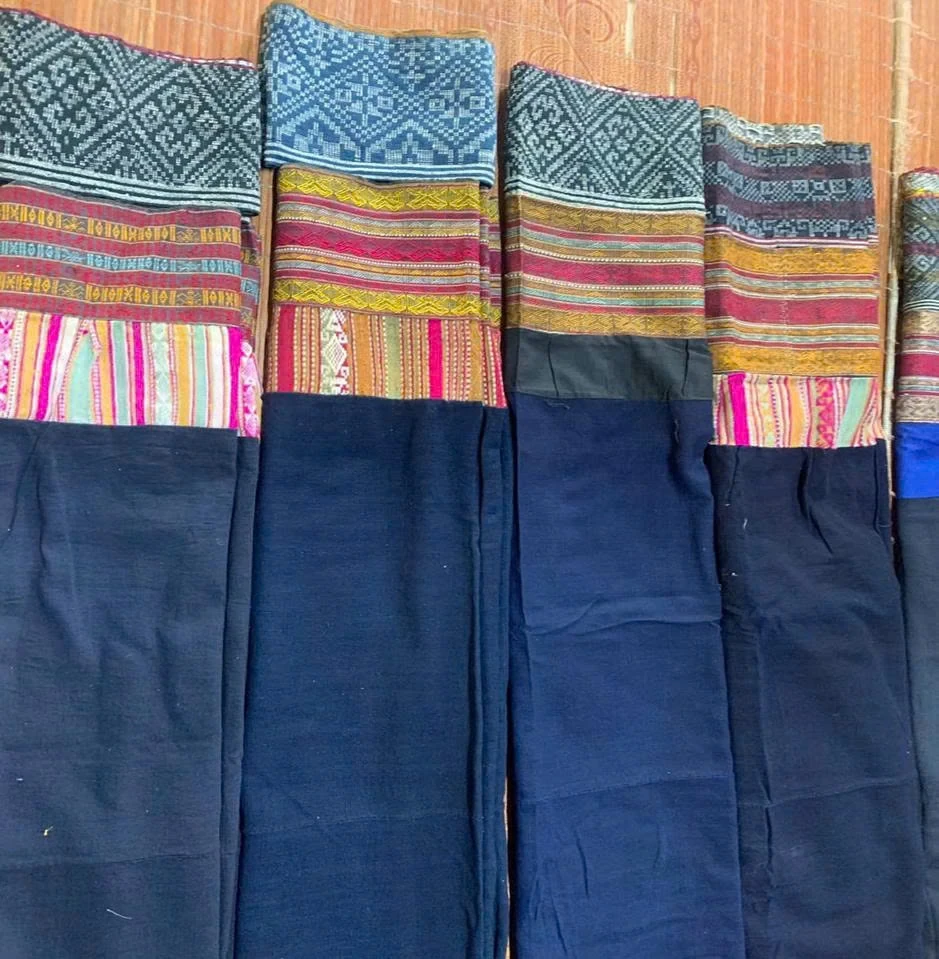{title}
{publish}
{head}
The Ministry of Culture, Sports and Tourism has officially announced the updated List of National Intangible Cultural Heritages. Following the recent administrative merger, Phu Tho province is honored to have four more heritages newly inscribed. Among them, two originate from the former Hoa Binh province.

Artisans from Muong Bi commune, Phu Tho province exchange knowledge and perform the Bo meng melody in a traditional stilt house.
The two newly recognized heritages from the former Hoa Binh province include: the art of creating decorative patterns on the waistbands of Muong women’s skirts in Tan Lac, Lac Son, and Yen Thuy districts, categorized under folk knowledge and traditional craftsmanship. This traditional art represents a rich and distinctive body of folk design and decoration, demonstrating refined aesthetic sensibility. The waistband decoration technique, a fundamental component of the Muong people’s traditional costumes, originated long ago and is closely intertwined with the history and cultural identity of the ethnic group.
The second heritage is Thuong Rang and Bo meng singing of the Muong ethnic group in the former Hoa Binh province, classified under folk performing arts. With deep historical roots, this genre constitutes a core part of the lyrical folk music repertoire created and preserved by the Muong community throughout their daily lives and production activities. It plays a vital role in their spiritual and cultural life, as well as in community customs and traditions.

Decorative patterns on the waistband of a traditional Muong skirt.
From the former Phu Tho province, two more elements have also been added to the national list: the Cuop Ken Festival in Di Nau commune (now Tho Van commune), and the Doi Tet celebration of the Muong people in Thu Cuc commune. Thus, the newly merged Phu Tho province now has four more elements recognized as National Intangible Cultural Heritages. To date, the province is home to a total of 39 nationally recognized intangible cultural heritages.
The inscription of these heritages affirms their historical and cultural significance and highlights their role in the spiritual life of the local community. It also contributes to raising awareness and enhancing the responsibility of all levels, sectors, and people in preserving and promoting the enduring values of these cultural heritages.
Cam Le

baophutho.vn On December 8, 2017, at its 12th session, the UNESCO Intergovernmental Committee for the Safeguarding of Intangible Cultural Heritage...

baophutho.vn Situated in the fertile land of Binh Nguyen (Vinh Phuc), the Huong Canh Communal House Complex — comprising Huong Canh, Ngoc Canh and Tien...

baophutho.vn For generations, whenever people mention Huong Canh Town (former Binh Xuyen District, Vinh Phuc Province), now Binh Nguyen Commune of Phu Tho...

baophutho.vn Kha Cuu Commune was formed by merging three former communes: Dong Cuu, Thuong Cuu, and Kha Cuu, with the Muong ethnic group accounting for over...

baophutho.vn Perched atop Tram Linh Hill, Quoc Te Temple in the former Di Nau Commune — now Tho Van Commune — has long been regarded as a solemn and...

baophutho.vn Located in Giap Lai Commune, this ancient communal house is revered by local residents as the “soul of the Muong village.” It is dedicated to...

baophutho.vn The Thai people are the largest indigenous ethnic group in Mai Chau District, now residing mainly in communes such as Mai Chau, Bao La, Mai Ha,...

baophutho.vn Today, Phu Tho Province is home to hundreds of traditional craft villages — from wood carving, blacksmithing, and bamboo weaving to mechanics,...

baophutho.vn In line with the orientation toward tourism-based economic development, the traditional brocade weaving craft of the Mong ethnic group in Pa Co...

baophutho.vn On the morning of October 25, the opening ceremony of the Mien Doi Terraced Fields Festival 2025 took place in Thuong Coc Commune.